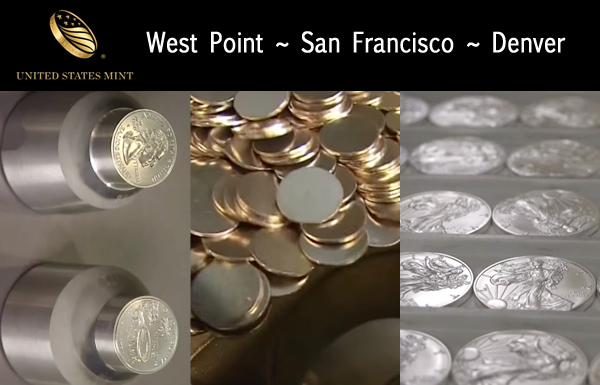How Modern Coins are Made
The earliest known examples of coins date back to 7th century Turkey. They were irregular in shape, stamped on one side, and made from a gold-silver mix, known as electrum. The Greeks refined the minting process, and later the Chinese, who were the first to use non-precious metals in their coins—a practice that soon spread to the West and became common among developed countries. Coin manufacturing techniques continued to evolve throughout Western cultures up through the industrial revolution and the invention of high-powered presses. Since then, with the exception of computer advancements, the coin making process has remained relatively unchanged.
Step One – The Furnace
Before a precious or non-precious metal may be run through a machine it must first be melted into an appropriate shape and size. The metal of choice (or combination of metals, as this is the stage at which blends are made) is placed into a furnace and heated to molten form, then poured into molds and cooled. The resulting long, flat bars are run through a press and further flattened into strips that are the precise thickness of the coins that will be produced. In the case of gold coins, for example, the gold starts out as a 400-ounce bar, much like the bars you’ve seen depicted in movies. By the time the bars are melted, molded and pressed, the strips can range from 13 inches wide to up to 1,500 feet long.
Step Two – The Blanking Press
Once the metal is reduced to a sheet of the proper thickness it is fed through a machine known as a Blanking Press. Much like a common hole-punch, the Blanking Press uses each sheet to punch out discs, which can be customized in size to suit a variety of coin types (i.e. a dollar, half-dollar, quarter, nickel, etc…). These discs are known as planchets or, more simply, blanks.
The excess from the metal strips is returned to the original furnace and melted down to make fresh sheets—nothing is wasted. At the same time, the blanks, which can be slightly brittle at this stage, are collected and run through a separate furnace, which heats them to the point of softening but not beyond. This helps preserve the metal’s pliability and makes the blanks more receptive to later striking (e.g. the actual imprinting process that presses a design into the blank’s surface).
Step Three – Preparing the Blanks for Striking
Before a blank is ready to be struck, it must first be washed and dried. Once cleaned, the blanks are then placed into a machine known as an Upset Mill, which helps to polish their surface and even-out their edges, creating a nicely rounded rim through a process of repeated churning.
Step Four – The Coin Press
Fresh from the Upset Mill, the cleaned and uniform blanks are now ready to be struck, and are placed securely into the coin press. Negatives of the prospective coin’s front (obverse) and back (reverse) are cast into the surface of two steel cylinders, which are known as dies. The dies are fit into the coin press, one above the blank, the other below, so that they can simultaneously “strike” the blank from both sides—hence the term. With a single strike, the design is imprinted into the blank’s front and back, and the coin is produced. In special cases, in order to enhance definition and highlight a particular design’s artistry, a coin may be struck more then once, and in rare cases, as many as nine times (See Saint-Gaudens Gold Coin), producing a level of astonishing clarity and beauty.
Proof coins are struck in the same manner as normal coins (Also known as Business Strike coins), but with one addition: the dies are polished with a special grease to make the coins extremely shiny and reflective. These coins are truly beautiful and are primarily made for collectors.
Step Five – Inspection
Now the coin is made, but before it can find its way to your pocket or collection, it must first be quality-inspected to verify that it is free of errors. A press operator personally inspects each new batch of freshly minted coins, measuring weight to ensure against planchet errors (this is when a design is imprinted on the wrong type of blank) and using a magnifying glass to check for spotting or other irregularities that might be caused by a die-break. Over the years, minting processes have greatly improved the techniques for error detection, so that today it is quite rare for a flawed coin to make it into circulation.
From Mint to You
After passing inspection, newly minted coins are run through an automatic counting machine and dropped into large bags. These bags are shipped to local Federal Reserve Banks, who in turn distribute the coins to authorized dealers. Mint State Gold, presented by Stuppler & Company, is proud to be an authorized dealer for both the Canadian and United States Mints—the number one and two, respectively, largest manufacturers of gold, silver, platinum, and palladium coins in the world today.







